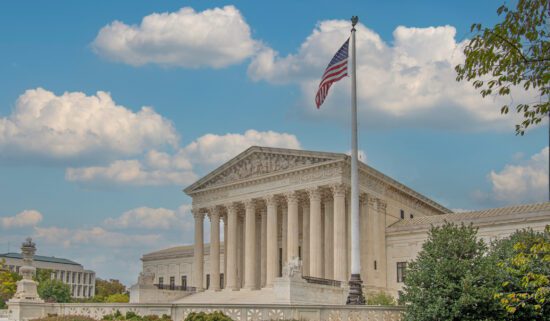This U.S. Congress is considering a joint resolution that would eliminate the deadline for the ratification of the Equal Rights Amendment.
The Equal Rights Amendment (ERA) is an amendment to the U.S. Constitution that was first introduced into Congress in 1923 and an amended version passed in 1972. Proponents of the amendment say that it would merely clarify that men and women have equal rights throughout the United States.
But as critics have forcefully argued for the past century, the ERA would be used primarily to strip women of any distinctives and, in many areas of life, would put them at a disadvantage in relation to men.
Attempting to erase gender distinctions
If promoting equality was the true goal, the ERA would be unnecessary. Numerous laws, including the Civil Rights Act of 1964, the Equal Pay Act of 1963, and the Title IX Amendment of 1972, protect women from discrimination on the basis of sex. The Supreme Court has also established protections for women in a variety of rulings over the past 50 years.
But the push for the ERA is not about promoting women; it’s about erasing all gender distinctions. The ideological perspective behind the ERA is in direct opposition to the biblical view of gender, which emphasizes the idea that men and women have distinct, complementary roles in the family, church, and society. Scripture makes clear that men and women were created with different strengths and weaknesses, and these differences should be embraced rather than rejected. Genesis 1:27 states that, “So God created man in his own image, in the image of God he created him; male and female he created them.” In this verse we see the beautiful reality that men and women are created equal in worth and dignity and yet were made distinct and non-interchangeable.
Attempting to erase gender differences causes significant harm to all of society and especially—as the transgender movement has proven—to women and children. One of the reasons for the attempted revival of the ERA is to provide a shortcut to the process of outlawing gender distinctions that has been used in recent years by the federal courts. A series of rulings have reinterpreted the meaning of “sex” and “equality of rights” in ways that have expanded abortion and LGBTQ+ rights.
From the founding of the country until a few years ago, the term “sex” was once used in federal laws and regulations in reference to biological sex. However, in recent years, federal courts have interpreted this term more broadly to prevent any distinctions based on gender identity and sexual orientation.
For example, in Bostock v. Clayton County (2020), the Supreme Court held that the prohibition on sex discrimination in Title VII of the Civil Rights Act of 1964 extends to discrimination based on sexual orientation and gender identity. The court reasoned that discrimination on the basis of sexual orientation or gender identity necessarily involves sex discrimination, because an individual’s sex is inherently tied to their sexual orientation or gender identity.
The ERA would codify such reasoning into the U.S. Constitution. The version approved by Congress in 1972 and sent to the states reads: “Equality of rights under the law shall not be denied or abridged by the United States or by any state on account of sex. The Congress shall have the power to enforce, by appropriate legislation, the provisions of this article.” Approval of the amendment would supercharge the efforts to reinterpret sex in a way that privileges the preferences of gay and transgender men over the rights of biological women—and make it nearly impossible to challenge such laws that specifically protect women.
Other areas of concern
Pro-life issues: The ERA would also threaten the hard-won gains that came from overturning Roe v. Wade. As the use of various state-level ERAs have shown, it would make it nearly impossible to implement state-level restrictions on abortion. We’ve also seen how such reasoning has been used at the federal level. In June Medical Services LLC v. Russo (2020), the Supreme Court struck down a Louisiana law that required doctors who perform abortions to have admitting privileges at nearby hospitals. The court found that the law placed an undue burden on women seeking abortions, in violation of Roe. The court noted that laws that restrict access to abortion may have a disproportionate impact on women because of their biological sex. The overturning of Roe returned such issues to the states. But the ERA would put them back in the control of federal legislators.
Education and scholarships: Passage of the ERA would also harm girls and young women by eliminating women’s programs and scholarships in all areas of education. Title IX currently allows for programs and scholarships that are exclusively for women, but the ERA would strike that down since any program or scholarship that excludes men would be discriminatory. Removing such efforts to level the playing field would be a blow to women who worked hard to gain representation in such areas as science, technology, and sports.
Additionally, adoption of the ERA would mean the end of single-sex colleges. It would also force the sex integration of entities such as fraternities, sororities, Boy Scouts, Girl Scouts, YMCA, YWCA, and Boys State and Girls State conducted by the American Legion. Public restrooms would also likely have to be unisex in order to avoid violating the constitutional provision. Shelters specifically for women experiencing homelessness and prisons designed specifically to house women would also likely be deemed unconstitutional.
Family structure and policy: The ERA would also have negative effects on the family structure and family policy. For example, the ERA would be used to challenge any laws that recognize the unique roles of mothers and fathers in parenting. It could also be used to challenge laws that provide benefits to mothers, such as maternity leave and flexible work hours, and prevent the protection of abused women. Currently, many states have laws that provide different levels of protection to men and women who are victims of domestic violence. The ERA would require states to eliminate these kinds of gender-based distinctions.
By attempting to erase the beautiful God-created distinctions between men and women, the ERA works to deny reality in a way that would cause further damage and harm to women and girls. Rather than helping women achieve parity with men, the amendment would enshrine within the U.S. Constitution that there should not be any legal distinctions ever made to protect women. Christians should oppose the ERA, not because we are opposed to equal rights, but because we are genuinely pro-woman.









